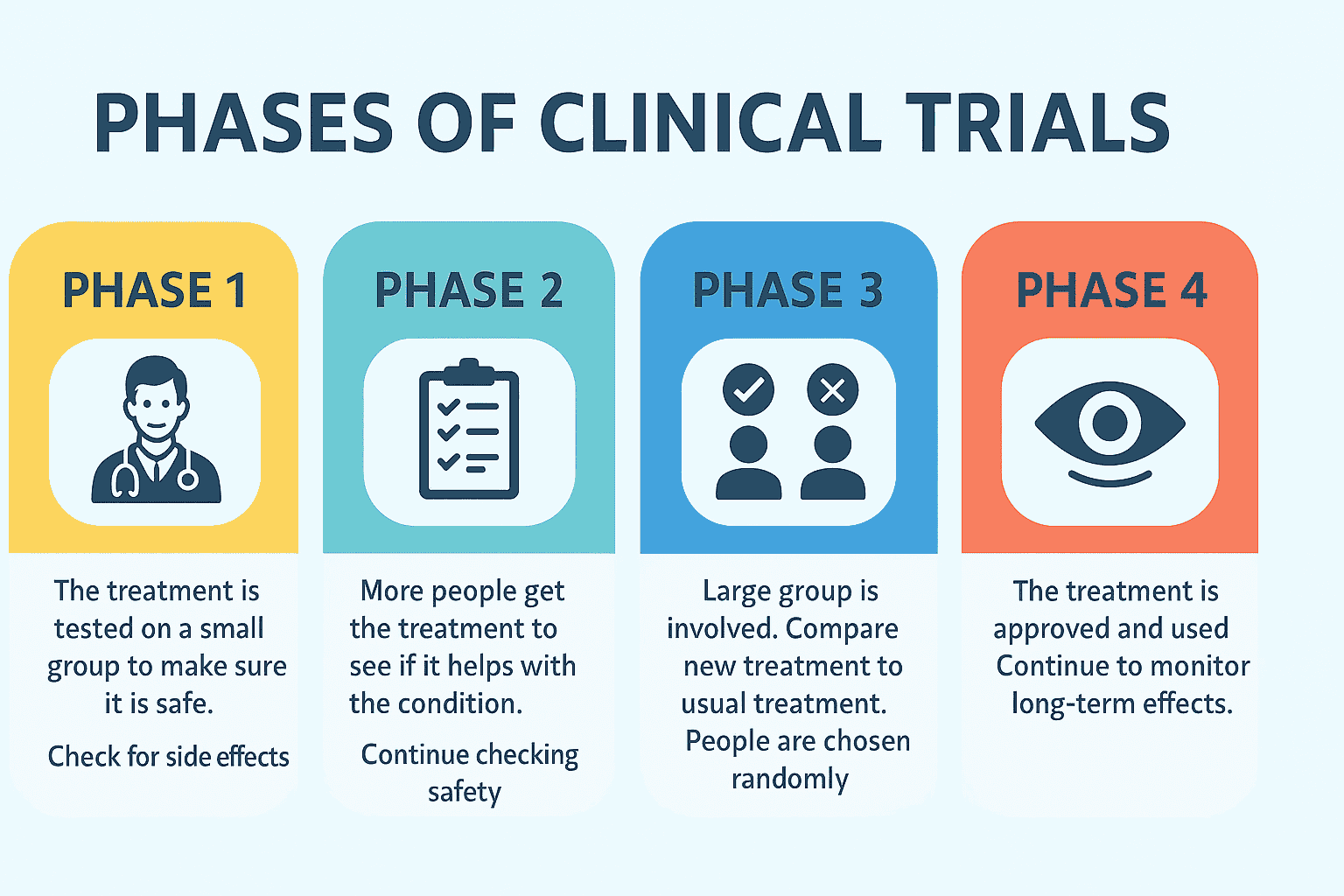AI in Clinical Trials is reshaping the future of medical research. When a small research team in Florida launched a new heart study last year, they were excited but nervous, just like many others starting a clinical trial. Finding the right participants had always been their biggest hurdle. Flyers, ads, and physician referrals brought in only a trickle of responses. Deadlines were slipping, and funding milestones were at risk.
So, the team decided to try something new: an AI-powered recruitment tool. Within a few weeks, they identified twice as many eligible participants as before, including people from communities that had been overlooked in past studies. For the first time, the study stayed on track.
Stories like this are becoming more common. AI in Clinical Trials is not about replacing people. It is about giving research teams the tools to work smarter, reach participants faster, and create a more human experience from start to finish.
Let’s explore how AI is helping researchers move from recruitment to retention and transforming the way trials are run.
Smarter Recruitment: Finding the Right People Faster
Recruitment is the toughest part of most trials. Around 80% of studies struggle to enroll participants on time. Traditional methods like email blasts, brochures, or physician outreach often miss the people who might actually qualify or be interested.
AI helps solve that. By analyzing data from electronic health records, past trials, and even local health trends, AI systems can identify potential participants who fit the criteria precisely and predict who might be most likely to respond.
In that Florida study, the AI tool helped the team focus on patients living within a certain radius who had matching conditions. Coordinators could finally spend more time reaching out personally instead of sifting through spreadsheets.
For sponsors, that means shorter timelines.
For research sites, less frustration.
And for patients, more opportunities to be part of something meaningful.
Personalized Communication: Keeping Participants Engaged
Finding participants is only half the job. The real challenge is keeping them involved until the end. Many people drop out because they feel disconnected, overwhelmed, or simply forgotten once the trial begins.
AI-driven engagement tools are helping fix that. They learn each participant’s preferences and communication patterns. If someone tends to ignore morning reminders but responds better at night, the system adjusts automatically. If a participant misses a check-in, AI alerts coordinators to reach out personally.
This kind of personalization makes participants feel seen and valued. Instead of robotic reminders, they get relevant, timely communication that supports them throughout their journey.
When people feel cared for, retention improves and data quality does too.
Real-Time Monitoring: Enhancing Safety and Efficiency in Clinical Trials
Traditional monitoring happens in cycles, sometimes weeks or months apart. That delay can hide safety issues or protocol deviations.
AI changes that by enabling real-time data monitoring. It continuously reviews information from wearable devices, eCRFs, and virtual visits to detect anomalies instantly. If a reading looks off or a trend breaks protocol, the system flags it for immediate review.
This does not replace human oversight; it strengthens it. Monitors and CROs can focus on high-risk events instead of manually checking every data point.
The result is safer participants, cleaner data, and fewer delays.
Predictive Insights: Planning Smarter, Not Harder
AI can learn from thousands of past trials to predict what might happen in new ones. It can identify which sites are likely to recruit faster, where retention might be a problem, and when timelines are at risk.
Sponsors can use these predictive insights to choose better site locations, allocate resources more effectively, and plan recruitment campaigns with real data instead of guesswork.
For example, one sponsor found that suburban sites consistently achieved steadier retention rates than urban centers. By shifting future studies accordingly, they reduced overall delays by nearly 30%.
With insights like these, AI helps researchers spend less time reacting and more time improving.
Building More Inclusive and Diverse Trials
Diversity has always been a challenge in clinical research. Too often, studies reflect only a small portion of the population.
AI can help bridge that gap. By analyzing anonymized population data, AI systems highlight underrepresented groups and suggest ways to reach them, whether through local health networks, digital campaigns, or hybrid study designs.
It can even help identify social or logistical barriers, such as lack of transportation, and recommend solutions like tele-visits or mobile sites.
This does not just make studies fairer; it makes them scientifically stronger. More diverse participation means more reliable data and treatments that work for everyone.
The Human Factor: AI as a Partner, Not a Replacement
There is a misconception that AI will replace the people who make trials happen. The truth is the opposite.
AI takes care of the repetitive, data-heavy work like eligibility checks, form reviews, and scheduling so coordinators, nurses, and investigators can focus on patients and research.
It is like having an extra set of hands that never gets tired. Human expertise, empathy, and judgment remain at the center of every decision.
When technology handles the busywork, people have more time to do what only humans can do: build trust, explain care, and make participants feel part of something bigger.
The Road Ahead: Ethical, Transparent, and Patient-First
As AI becomes a bigger part of research, transparency and ethics must lead the way. Data privacy, security, and fairness are not optional; they are essential. Regulations like HIPAA and GDPR, along with emerging standards for explainable AI, ensure accountability and trust.
Platforms like DecenTrialz are helping make that future real. By connecting sponsors, CROs, and sites with AI-driven tools for recruitment, monitoring, and retention, DecenTrialz is proving that technology can be both powerful and humane.
It is not about making trials colder or more mechanical; it is about giving researchers and participants the clarity, connection, and confidence they deserve.
AI in clinical trials is not just about algorithms. It is about people, the researchers, coordinators, and patients who make medical progress possible.
From the moment someone is identified as a potential participant to the day they complete their final visit, AI is there to simplify, support, and strengthen the process.
The future of research is not just faster; it is fairer, smarter, and more human.
When technology and empathy work together, everyone wins.







